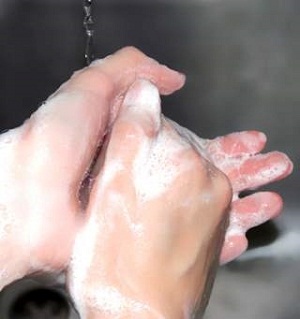Signs of Obsessive-Compulsive Disorder in Children
Posted by PLB · Leave a Comment

 Obsessive-Compulsive Disorder (OCD) is a neurobiological disorder that involves recurrence of senseless, intrusive, continuous, anxiety-producing thoughts and impulses (obsessions), that children attempt to ward off with rigidly patterned, irrational behaviors (compulsions).
Obsessive-Compulsive Disorder (OCD) is a neurobiological disorder that involves recurrence of senseless, intrusive, continuous, anxiety-producing thoughts and impulses (obsessions), that children attempt to ward off with rigidly patterned, irrational behaviors (compulsions).
Almost as common as ADHD, this illness affects more than a million children and adolescents, with boys twice as likely to be stricken as girls.
Signs of Obsessive-Compulsive Disorder in children can start as early as ages three or four, but the peak age for onset is age 10. Younger children may not interpret their odd, stereotyped behaviors as unusual; to them, they are just “absolutely necessary” and blocking or preventing their compulsive responses can trigger violent tantrums. Older children will often become exhausted in an effort to hide their condition from peers.
Some of the symptoms or signs of Obsessive-Compulsive Disorder in children are:
- Fear of contamination, dread of germs
- Fixation of lucky/unlucky numbers
- Fear of catastrophic danger to self or others (fire, death, illness)
- Need for symmetry and exactness (objects or furniture must be placed “just so”)
- Excessive doubts
- Forbidden, aggressive, or perverse sexual thoughts and impulses
Some of the compulsions that those who OCD have are:
- Ritual hand-washing, showering, grooming, cleaning
- Repetitive counting, touching, getting up and down, going in and out, writing/erasing/rewriting
- Continuous checking and questioning; arguing, hoarding, or collecting
How can we, as teachers, tune ourselves to notice obsessions in our classroom and help the children who struggle with this disorder?
From Professional Learning Board’s online continuing education course for teachers: Recognizing Early-onset Mental Health Disorder



